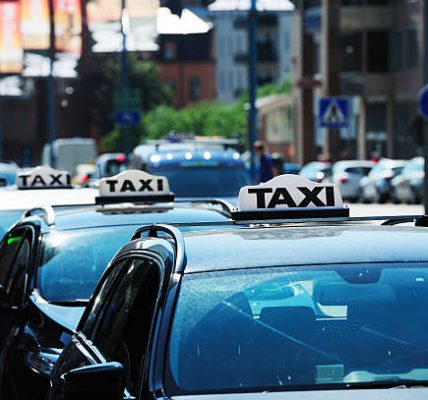-
Table of Contents
“Transforming cities into vibrant destinations for all.”
Tourism and urban development are closely intertwined, as cities around the world strive to create attractive destinations for both residents and visitors. The concept of shaping cities for residents and visitors alike recognizes the importance of balancing the needs and desires of both groups. This approach aims to create vibrant, livable cities that not only cater to tourists but also enhance the quality of life for local residents. By focusing on sustainable development, cultural preservation, and community engagement, cities can successfully harness the economic and social benefits of tourism while ensuring the well-being of their residents.
The Impact of Tourism on Urban Development: A Case Study
Tourism has become a significant driver of urban development in many cities around the world. The influx of visitors brings with it a range of economic, social, and environmental impacts that shape the urban landscape. To understand the complex relationship between tourism and urban development, it is essential to examine specific case studies that highlight the various dimensions of this phenomenon.
One such case study is Barcelona, a city that has experienced a rapid increase in tourism over the past few decades. The city’s unique blend of history, culture, and architecture has made it a popular destination for travelers from all over the globe. However, this surge in tourism has not come without its challenges.
The impact of tourism on Barcelona’s urban development can be seen in various aspects of the city. One of the most noticeable changes is the transformation of certain neighborhoods into tourist hotspots. Areas like the Gothic Quarter and El Raval, once primarily residential, have now become crowded with hotels, restaurants, and souvenir shops catering to tourists. This transformation has led to a displacement of local residents and a loss of community identity.
Furthermore, the rise in tourism has also put pressure on Barcelona’s infrastructure. The city’s transportation system, for instance, has struggled to cope with the increased demand. The overcrowding of public transport and the proliferation of tourist buses have led to congestion and a decline in the quality of life for residents. Additionally, the strain on public services such as waste management and water supply has become more pronounced, as the city struggles to meet the needs of both residents and visitors.
Another significant impact of tourism on urban development is the commodification of cultural heritage. Barcelona’s iconic landmarks, such as the Sagrada Familia and Park Güell, have become symbols of the city’s tourism industry. While these sites attract millions of visitors each year, they have also become commercialized, with entrance fees and long queues becoming the norm. This commodification has raised concerns about the preservation of cultural heritage and the authenticity of the visitor experience.
Despite these challenges, tourism has also brought about positive changes in Barcelona’s urban development. The economic benefits of tourism are undeniable, with the industry contributing significantly to the city’s GDP and providing employment opportunities for many residents. The revenue generated from tourism has allowed for investments in infrastructure, public spaces, and cultural initiatives that benefit both residents and visitors alike.
Moreover, tourism has helped put Barcelona on the global map, attracting international attention and fostering a sense of pride among its residents. The city’s vibrant cultural scene, including its festivals, art exhibitions, and culinary offerings, has flourished as a result of increased tourism. This has not only enhanced the quality of life for residents but has also contributed to the city’s overall attractiveness as a destination.
In conclusion, the impact of tourism on urban development is a complex and multifaceted phenomenon. The case study of Barcelona highlights both the positive and negative consequences of tourism on the city’s landscape. While the rapid increase in visitors has led to challenges such as overcrowding, infrastructure strain, and the commodification of cultural heritage, it has also brought economic benefits and cultural enrichment. Balancing the needs of residents and visitors is crucial in shaping cities that can thrive as both tourist destinations and livable communities.
Sustainable Tourism Practices for Urban Development
Tourism and Urban Development: Shaping Cities for Residents and Visitors Alike
Sustainable Tourism Practices for Urban Development
In recent years, the relationship between tourism and urban development has become increasingly important. As cities around the world strive to attract visitors and boost their economies, it is crucial to consider the long-term impact of tourism on the environment, infrastructure, and quality of life for residents. This has led to the emergence of sustainable tourism practices that aim to strike a balance between the needs of tourists and the well-being of the local community.
One key aspect of sustainable tourism is the preservation of natural resources. Urban areas often have limited green spaces, and the influx of tourists can put additional strain on these areas. To address this, cities are implementing measures such as creating urban parks, promoting green transportation options, and encouraging responsible waste management. By preserving and enhancing natural resources, cities can ensure that both residents and visitors can enjoy a clean and healthy environment.
Another important consideration is the preservation of cultural heritage. Many cities have a rich history and unique cultural assets that attract tourists. However, the increased footfall can lead to overcrowding and degradation of these sites. To mitigate this, cities are implementing strategies such as limiting visitor numbers, implementing time slots for visits, and promoting responsible tourism behavior. By preserving cultural heritage, cities can maintain their authenticity and ensure that residents and visitors alike can appreciate and learn from these valuable assets.
Furthermore, sustainable tourism practices also focus on the economic benefits for the local community. While tourism can bring in revenue and job opportunities, it is essential to ensure that these benefits are distributed equitably. Cities are implementing measures such as promoting local businesses, encouraging community involvement in tourism planning, and investing in infrastructure that benefits both residents and visitors. By prioritizing the well-being of the local community, cities can create a sustainable tourism industry that supports economic growth and enhances the quality of life for residents.
Transportation is another critical aspect of sustainable tourism practices. The increased number of tourists can put a strain on existing transportation systems, leading to congestion and pollution. To address this, cities are investing in public transportation infrastructure, promoting cycling and walking, and implementing smart transportation solutions. By providing efficient and sustainable transportation options, cities can reduce the environmental impact of tourism and improve the overall experience for both residents and visitors.
In conclusion, sustainable tourism practices are crucial for shaping cities that cater to the needs of both residents and visitors. By preserving natural resources, protecting cultural heritage, promoting economic benefits for the local community, and investing in sustainable transportation, cities can create a harmonious balance between tourism and urban development. It is essential for cities to adopt these practices to ensure the long-term sustainability and well-being of their communities. By doing so, cities can thrive as attractive destinations for tourists while providing a high quality of life for their residents.
Enhancing the Tourist Experience through Urban Development
Tourism and Urban Development: Shaping Cities for Residents and Visitors Alike
Enhancing the Tourist Experience through Urban Development
Urban development plays a crucial role in shaping cities to meet the needs and expectations of both residents and visitors. As tourism continues to grow and become a significant contributor to local economies, cities must adapt and evolve to provide an exceptional experience for tourists. This article explores how urban development can enhance the tourist experience, making cities more attractive and enjoyable for both residents and visitors.
One key aspect of enhancing the tourist experience is creating vibrant and attractive public spaces. Parks, plazas, and waterfronts are essential elements of urban development that can draw tourists and provide them with a place to relax and enjoy the city’s ambiance. These spaces can be designed to incorporate cultural elements, such as sculptures or art installations, that reflect the city’s identity and heritage. By creating inviting public spaces, cities can encourage tourists to spend more time exploring and engaging with the local community.
Another important consideration in urban development is the preservation and restoration of historical and cultural sites. These sites not only attract tourists but also contribute to the overall character and identity of a city. By investing in the preservation of historical buildings, monuments, and landmarks, cities can create a sense of place and history that adds value to the tourist experience. Additionally, restoring these sites can generate economic benefits by attracting heritage tourism and supporting local businesses.
Furthermore, urban development should prioritize the improvement of transportation infrastructure to facilitate the movement of tourists within the city. Efficient public transportation systems, such as buses, trams, or subways, can make it easier for visitors to navigate the city and access different attractions. Additionally, cities can invest in pedestrian-friendly infrastructure, such as sidewalks and bike lanes, to encourage tourists to explore the city on foot or by bicycle. These improvements not only enhance the tourist experience but also contribute to reducing traffic congestion and promoting sustainable modes of transportation.
In addition to physical infrastructure, cities can leverage technology to enhance the tourist experience. The integration of smart city technologies, such as mobile applications or interactive maps, can provide tourists with real-time information about attractions, events, and transportation options. These digital tools can help visitors plan their itineraries, discover hidden gems, and navigate the city more efficiently. By embracing technology, cities can create a seamless and personalized experience for tourists, enhancing their overall satisfaction and encouraging them to return in the future.
Lastly, urban development should prioritize the creation of a safe and welcoming environment for both residents and tourists. This includes investing in security measures, such as surveillance cameras or well-lit streets, to ensure the safety of visitors. Additionally, cities can promote cultural diversity and inclusivity by supporting local businesses, festivals, and events that celebrate different cultures and traditions. By fostering a sense of community and inclusivity, cities can create a positive and memorable experience for tourists, encouraging them to recommend the city to others and return for future visits.
In conclusion, urban development plays a crucial role in shaping cities to meet the needs and expectations of both residents and tourists. By creating vibrant public spaces, preserving historical sites, improving transportation infrastructure, leveraging technology, and fostering a safe and welcoming environment, cities can enhance the tourist experience and make their destinations more attractive and enjoyable for visitors. Ultimately, by investing in urban development that prioritizes the needs of both residents and tourists, cities can thrive economically and culturally, becoming truly world-class destinations.Tourism and urban development play a crucial role in shaping cities for both residents and visitors. The growth of tourism can bring numerous benefits to a city, including economic prosperity, job creation, and cultural exchange. However, it also poses challenges such as overcrowding, increased cost of living, and environmental degradation. To ensure a harmonious coexistence between residents and visitors, cities need to prioritize sustainable development, community engagement, and infrastructure improvements. By striking a balance between the needs of residents and the demands of tourists, cities can create a vibrant and inclusive urban environment that benefits all stakeholders.



